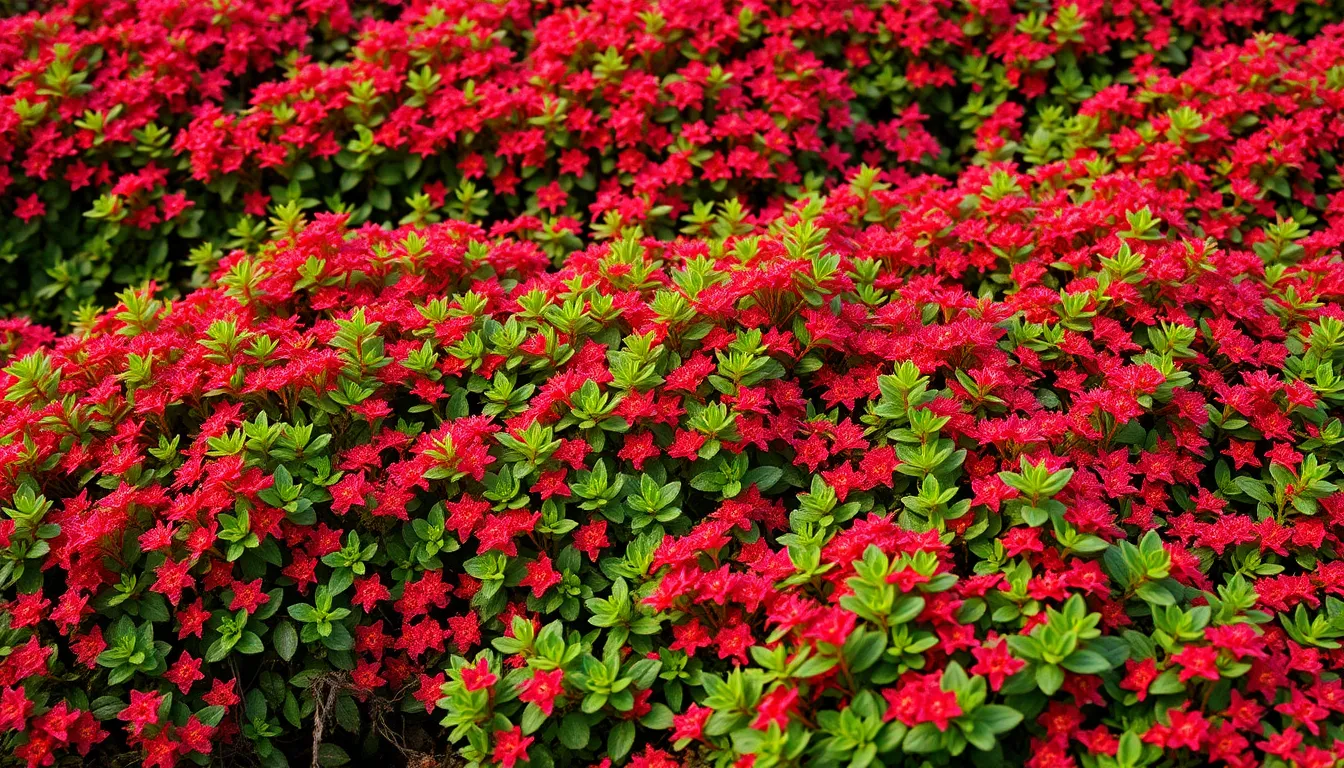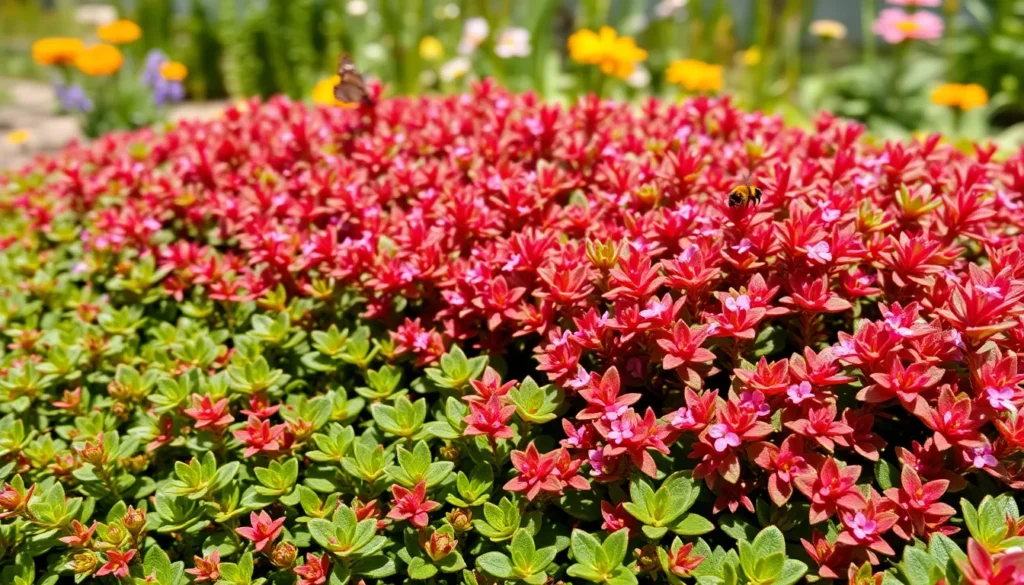Red creeping thyme, known for its vibrant color and aromatic leaves, often catches the eye of gardeners and landscapers alike. This hardy ground cover thrives in various conditions, making it a popular choice for adding beauty and texture to outdoor spaces. However, as its popularity grows, so do concerns about its potential invasiveness.
Understanding whether red creeping thyme is truly invasive is crucial for maintaining healthy ecosystems. While it offers numerous benefits, including erosion control and attracting pollinators, its aggressive growth can sometimes lead to unintended consequences. This article delves into the characteristics of red creeping thyme, its growth habits, and the implications of planting it in different environments, helping readers make informed decisions for their gardens.
Table of Contents
ToggleOverview of Red Creeping Thyme
Red creeping thyme is a low-growing perennial known for its vibrant color and aromatic leaves. Understanding its characteristics and common uses helps gardeners make informed decisions about its application in various environments.
Characteristics of Red Creeping Thyme
Red creeping thyme (Thymus serpyllum) features small, green, herbaceous leaves with a reddish tint. The plant typically reaches a height of 2 to 6 inches and spreads up to 24 inches, forming dense mats. It produces tiny purple to pink flowers during the summer months, attracting pollinators like bees and butterflies. The plant thrives in well-drained soils and full sunlight, exhibiting drought resistance once established.
Common Uses in Landscaping
- Ground Cover: Creates a dense mat that suppresses weeds, making it ideal for filling gaps between stones or in garden beds.
- Erosion Control: Reduces soil erosion on slopes due to its extensive root system, stabilizing the ground.
- Aesthetic Appeal: Adds vibrant color and fragrance, enhancing the visual appeal of pathways and rock gardens.
- Pollinator Attraction: Supports local ecosystems by attracting beneficial insects, which promotes biodiversity.
Invasiveness of Red Creeping Thyme

Understanding the invasiveness of red creeping thyme is crucial for managing its growth in gardens and natural areas.
Definitions of Invasive Species
Invasive species refer to non-native organisms that spread rapidly, causing harm to native ecosystems, economies, or human health. The U.S. Fish and Wildlife Service defines invasive species as those that can disrupt local biodiversity and outcompete native plants. Red creeping thyme, though valued for its ground cover capabilities, can exhibit behaviors characteristic of invasive plants, such as forming dense mats that smother other vegetation.
Factors Contributing to Invasiveness
Several factors contribute to the invasiveness of red creeping thyme:
- Aggressive Growth: Red creeping thyme grows quickly, spreading up to 24 inches. This rapid expansion can overwhelm native flora.
- Seed Production: The plant produces seeds, which can disperse widely, facilitating colonization in unwanted areas.
- Environmental Adaptability: Red creeping thyme thrives in diverse conditions, including poor soil and drought, allowing it to compete effectively against native species.
- Lack of Natural Predators: In regions where red creeping thyme is not native, it often faces fewer natural predators, enabling unchecked growth.
- Rhizomatic Growth: The plant’s ability to spread through underground stems enhances its capability to form extensive mats, improving its dominance in landscapes.
These factors highlight the dual nature of red creeping thyme, where its benefits as a resilient ground cover can lead to detrimental ecological impacts if not managed appropriately.
Ecological Impact
Red creeping thyme displays significant ecological implications, particularly concerning native plant communities and local ecosystems. Understanding these impacts helps inform responsible landscaping practices.
Effects on Native Flora
Red creeping thyme can suppress native flora through competition for resources. Its rapid growth allows it to outcompete local species for sunlight, nutrients, and water. Over time, this can reduce biodiversity as native plants struggle to establish and thrive in areas dominated by red creeping thyme. The resulting monoculture can limit habitat options for various species that depend on diverse plant life.
Impact on Local Ecosystems
Red creeping thyme affects local ecosystems in multiple ways. Its aggressive spread may alter soil composition and water availability, impacting surrounding plants and wildlife. Frequent displacement of native species disrupts ecological balances, leading to the decline of specific insect populations that rely on native plants for food. Additionally, the plant’s dense mats can impede the growth of seedlings and hinder natural regeneration processes, creating long-term challenges for ecosystem recovery and health.
Management Strategies
Effective management strategies for red creeping thyme focus on both prevention and control to mitigate its invasiveness.
Prevention Techniques
Implementing prevention techniques is crucial for managing red creeping thyme’s spread. Selecting non-invasive alternatives for ground cover minimizes the risk of unintentional introduction into new areas. Regular monitoring of garden spaces helps identify early signs of growth. Educating landscapers and gardeners about the characteristics and behaviors of red creeping thyme encourages informed decisions on plant selection. Preventing seed maturation and dispersal through timely pruning and deadheading also limits the plant’s proliferation.
Control Measures
Utilizing control measures effectively manages existing populations of red creeping thyme. Manual removal involves pulling the plant from the root, ensuring complete extraction to prevent regrowth. Chemical herbicides, specifically ones containing glyphosate, may apply in targeted areas, but caution is essential to protect surrounding flora. Maintaining a diverse plant community through competition supports native species and hinders the spread of red creeping thyme. Regular care routines, such as mulching or applying beneficial ground covers, suppress invasive growth by creating less favorable conditions for red creeping thyme establishment.
Red creeping thyme offers both beauty and utility in landscaping but carries the risk of becoming invasive. Its rapid growth and ability to outcompete native plants can disrupt local ecosystems. Gardeners and landscapers must weigh its advantages against its potential ecological impact. By implementing effective management strategies and considering alternative ground covers, it’s possible to enjoy the benefits of red creeping thyme while safeguarding biodiversity. Making informed decisions about its use will help maintain a healthy balance in gardens and natural areas.






